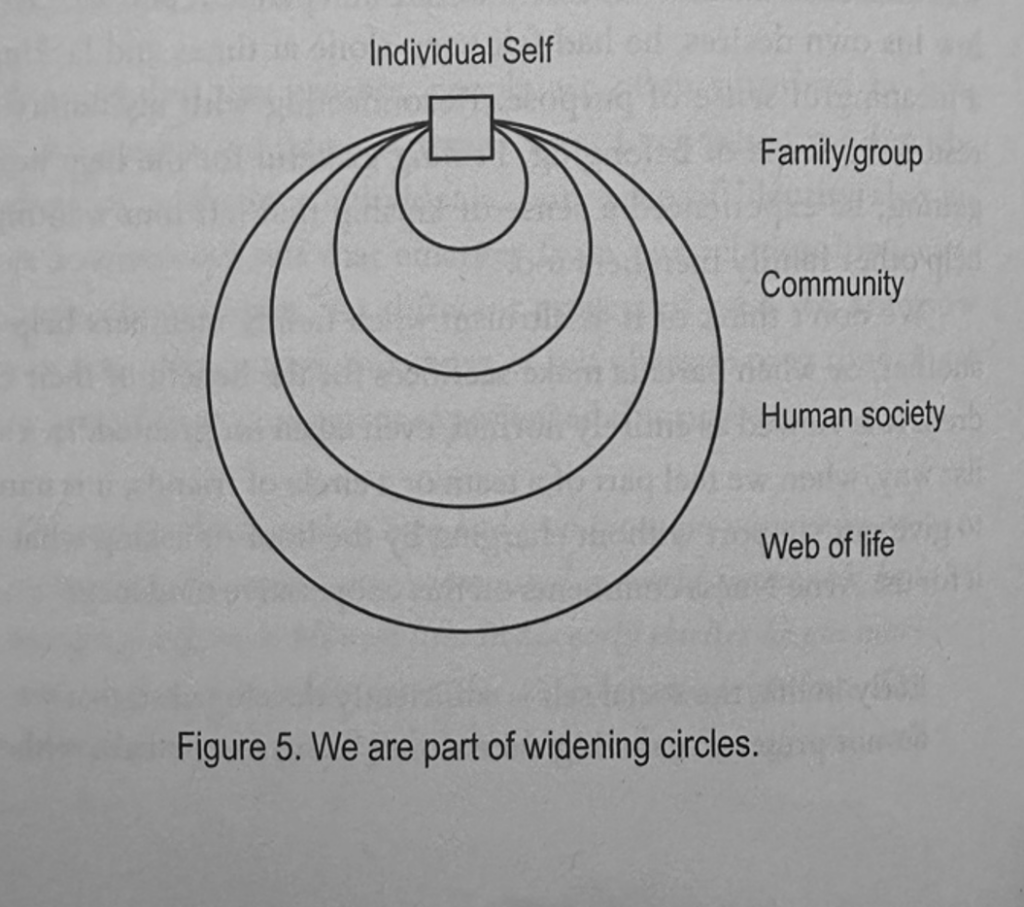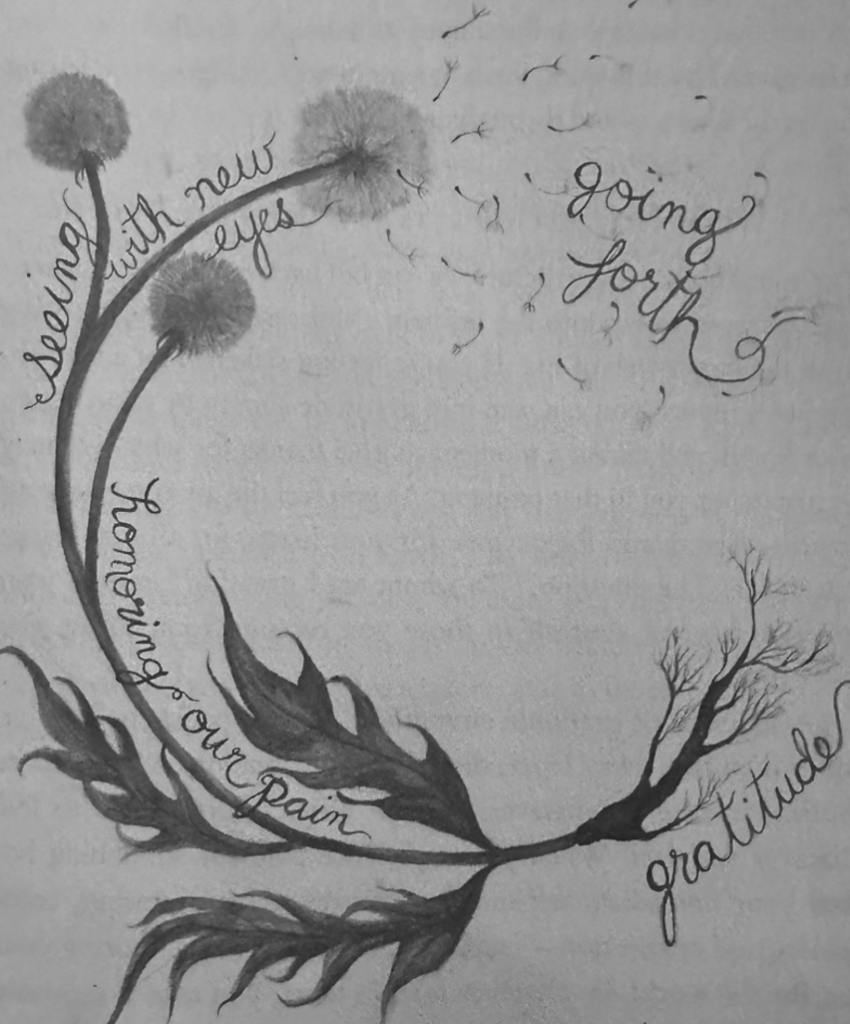“It isn’t my job to fix this!” “Nothing I can do will make a difference anyways…” Fear, despair, and individualism in the face of the climate crisis sound like paralysis. Active Hope, by Joanna Macy and Chris Johnstone, presents a holistic eco-philosophy which “strengthens our capacity to face disturbing information.” Dr. Joanna Macy, a scholar of Buddhism and deep ecology, has built a global web of group workshops which practice the philosophy of Active Hope. Her co-author, Dr. Chris Johnstone, is a coach for these workshops, and also teaches on the psychological dimensions of the climate crisis. Through a fusion of spiritual, meditative, and psychological techniques, the authors help foster and reframe the relationship between inner peace and creative, collective responses to the environmental problems of our era.

Individualism has always been a part of my personal meditative practice. If I could only focus on myself, rather than my external reality, then I could find inner peace, I thought. A mere 30 pages into Active Hope, Macy and Johnstone shocked me by not only suggesting collaboration in guided practice, but by reimagining the “self” to include the immediate people around us, the global human family, and the ecological web of life – past, present, and future. Collaboration changes the model of power you internalize. Because of the potential for “new capacities [to] emerge when groups of peoples act together to form larger complex systems,” power resides in the strength of choice your community makes, rather than in the influence or desirability of the outcome. And by broadening your sense of self to include all human society and the many trillions of parts of the environment, your purpose skyrockets because your sense of belonging is greater. For the same reason, the degree of support you feel increases, preparing you to engage in action.
Vietnamese Zen Master Thich Nhat Hanh once said that “what we most need to do is to hear within us the sounds of the Earth crying.” Pain, in whatever form that may take, fear or sadness; these are natural responses to the climate crisis, especially if you have internalized the widest sense of self to include the aspects of the Earth that are dying. This is one of the reasons that Indigenous peoples globally are suffering from higher rates of what is called Solastalgia, the climate grief best described as homesickness without leaving home. Because the environment is not simply utilitarian, but a part of Indigenous community, culture, and sense of self, environmental degradation and climate change causes immense pain. Active Hope, contrary to what the name may suggest, is not about replacing those feelings with hollow optimism or wishful thinking. Macy and Johnstone actually share practices to help you feel pain more deeply and honour it. One of the paired activities proposed is to use open sentence prompts to share your feelings with your partner and “uncover what is already there.” A 2021 study supports the conviction that verbalizing emotions and having another person acknowledge them heightens the trust and interconnection between people. Macy and Johnstone also equate pain to profound caring and suggest that caring stimulates imagination and creativity. After all, nightmares can inspire as well. Thus, even if the emotion itself is not peaceful, honouring pain can bring about some inner peace as well as engagement.
Simultaneously, gratitude is intrinsic to the teachings of Active Hope. The authors of a 2022 research paper wrote, “In the understanding of human-nature relations, nature is often regarded as a victim of humans’ interference.” The paper found that by reframing the narrative (“wherein nature is a benefactor and humans are beneficiaries”) through practicing gratitude, pro-environmental behaviour increased. Macy and Johnstone trace this relationship between gratitude and positive action to the impact that practising gratitude has on well-being, trust, generosity, and our sense of interconnectedness with the natural world.

Reading Active Hope was not my first time hearing of the recontextualization of time, but it was my first time understanding the implications that this shift in perception has for inner peace and action. If each of the 4.5 billion years in the history of Planet Earth was equivalent to a single day, human existence has so far lasted 5 seconds. Unless we consistently reframe our existence to include what came before and what will come after, the meaning and purpose of our lives is low. We ask, without realising that our actions could have impacts on a much larger time scale, what the point of a given project was if we do not see immediate consequences. Widening our understanding of time also allows activism to be understood more broadly as positive day to day action, with impacts yet to unravel. I breathed a sigh of relief when I read this chapter: I now understand that I have not failed to produce results or to be an adequate activist.
Each chapter adds another layer to the picture Macy and Johnstone paint of the relationship between inner peace and the wellbeing of our environment. In fostering the elements of inner peace – interconnection, the honouring of our pain, gratitude, and the reimagining of complex systems like time – Active Hope builds up people and groups to a point where they can partake in collective action, whatever that may look like.
‘What do you think?’
- Does recontextualising and broadening your place in time bring you peace or anxiety?
- Have you ever tried a collaborative meditative practice?
- Do you prefer to find inner peace in isolation, or in collaboration?
- Do you agree with the suggestion of Active Hope that focusing on inner peace can improve the wellbeing of the environment?
- How connected do you think interpersonnal and international peace are with the wellbeing of the environment?
- What practices which foster Active Hope could you incorporate into your everyday routine?
If you enjoyed this item in our museum…
You might also enjoy ‘Mindful Peace with Haemin Sunim’, ‘Creating Peace in Post-Conflict Society: The use of Intergroup Contact Theory’, ‘Moral Injury: Healing’, and ‘Cyber peace and activism, with Kathryn Brimblecombe-Fox‘
Madighan Ryan, October 2023